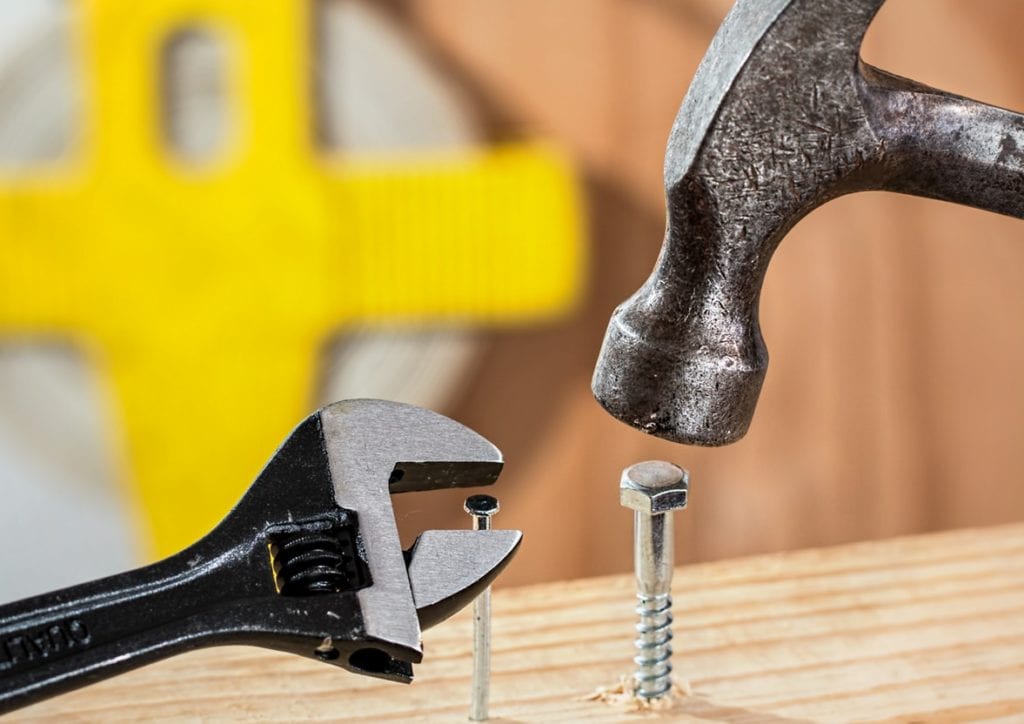Firstly, the independent IT support industry for hardware, parts and hardware maintenance has been in business since the 1980s and became possible after the governmental intervention to correct anti-competitive policies created by the OEMs (to protect their monopolies). Second, OEMs have used all sorts of sales strategies ever since to discount the validity of the independent marketplace. Those of us in the independent market have called those strategies, “F.U.D.” – for Fear, Uncertainty & Doubt.
We know this from 29 years of competing with the OEM and our executives previously ran sales divisions for the OEMs.
For federal agencies, federal systems integrators and private enterprise, the exploration of facts surrounding OEM F.U.D. is paramount to retaining negotiating leverage and capitalizing on the tremendous cost-savings potential of independent providers such as hardware resellers (of pre-owned hardware), Third Party Maintainers and hardware lessors.
To be abundantly clear, this subject is entirely about post-warranty hardware – or what many refer to as “legacy” hardware assets. As so many companies and institutions are proactively seeking IT cost containment, while doing more with fewer budget dollars, data center hardware assets can and are being kept long past warranty expirations. Gartner, IDC, and other unbiased industry analysts have published and publicly stated, that (paraphrasing) in the typical data center:
- 20-22% of all data center and networking assets are post-warranty
- Hardware lifecycle strategies now strive to retain storage assets for 8+ years
Additionally (ID: G00327730), that:
- 71% of the world’s 100 largest companies are using Third Party Maintenance
- 70% of the world’s 100 largest companies are using Hardware Resellers to buy pre-owned hardware
Yet, nearly all OEM sales strategies include fear-mongering language about counterfeit hardware and parts. You have quite likely been told, “You can only trust that complete systems and parts sold by the manufacturer are valid and contain no risk of being counterfeit. Buying pre-owned hardware assets from an independent or using independent hardware maintenance would be opening yourself to great risk, and we can’t help you when mistakes are discovered.” There is so much wrong with that statement that it’s hard to decide where to begin. Yet, such is the argument from Original Equipment Manufacturers for consumer products through to the data center hardware and networking assets you rely upon every day.
Please permit me a brief tangent to the core subject of “counterfeit hardware.” Globally and nationwide, independent providers of pre-owned hardware and Third Party Maintenance originated the “Right to Repair” movement and the Repair Association. We generated significant interest within the consumer audience, as well as the rightful owners of servers, storage and networking hardware assets. Now, legislation to correct OEM anti-competitive behavior is underway in 22 states. In the last year, we have garnered positive and supporting attention from presidential candidates, as well as sincere attention from the FTC and Department of Justice. A sampling of the latest news:
- Vice:
- Reason:
- US PIRG:
Change is in the air! I am confident that OEM monopolistic practices will be changed to protect the rightful owners of hardware and such electronic devices. Your familiarity with this issue and our efforts to protect independent repair OPTIONS for you are paramount to your comprehension of the truths about independent IT providers and “counterfeit hardware.”
Let’s dive further into truths about “Counterfeit Hardware,” the impact of avoiding independent providers vs. how independent providers should be vetted by your procurement teams:
- “Brand Name Only” Restrictions: Were rooted in good intention, but have been a short-sighted policy that hasn’t permitted competition from upstanding independent providers that simply do not sell or use counterfeit parts. A recent report by the GAO indicates that the Federal Government is spending 75 percent of the total amount budgeted for IT on operation and maintenance (O&M) investments to maintain legacy products. They estimated that $60 Billion is spent on maintaining legacy IT equipment that is up between 3 and 56 years old.
- Sourcing Hardware: As you might expect, there’s a massive difference between an eBay reseller and an established, respected hardware reseller (with brick and mortar facilities). As a matter of fact, there exists a global hardware reseller membership organization, named ASCDI, which upholds a critical position (in its charter) on ethical business practices. Members found/discovered to be engaging in illegal or unethical practices are banned from membership. It’s in your best interests to ONLY buy hardware/parts from an ASCDI member organization.
- ISO9001 Certification: When vetting independent hardware resellers and maintenance providers, look for this ISO certification. When you find those with this certification, you’re likely to discover companies with credible histories of doing business with discriminating federal agencies, Prime Contractors and the world’s 500 largest companies.
- For example, XS International (XSi) have provided Third Party Maintenance to over (40) Federal Agencies via GSA and other IDIQ contracts to the Air Force, Army, DHA, DHS, DOJ, DOL, DOJ, DOT, EPA, FAA, FTC, IDA, Navy, NCIS, NOAA, NAVSUP, SBA, US Attorney’s Office, US Coast Guard, US Dept of State, USGS, US Marine Corp, USPS.
- XSi is a Trusted Supplier to Prime Contractors including Boeing, CACI, CSC, Exelis, Harris Corp, Jacobs Engineering, L-3, Lockheed Martin, Northrop Grumman, Raytheon and more
Please follow our LinkedIn Company Profile (at www.linkedin.com/company/evernex/) and watch for two more blogs about “counterfeit hardware” in the coming weeks.
Follow Us On LinkedIn





